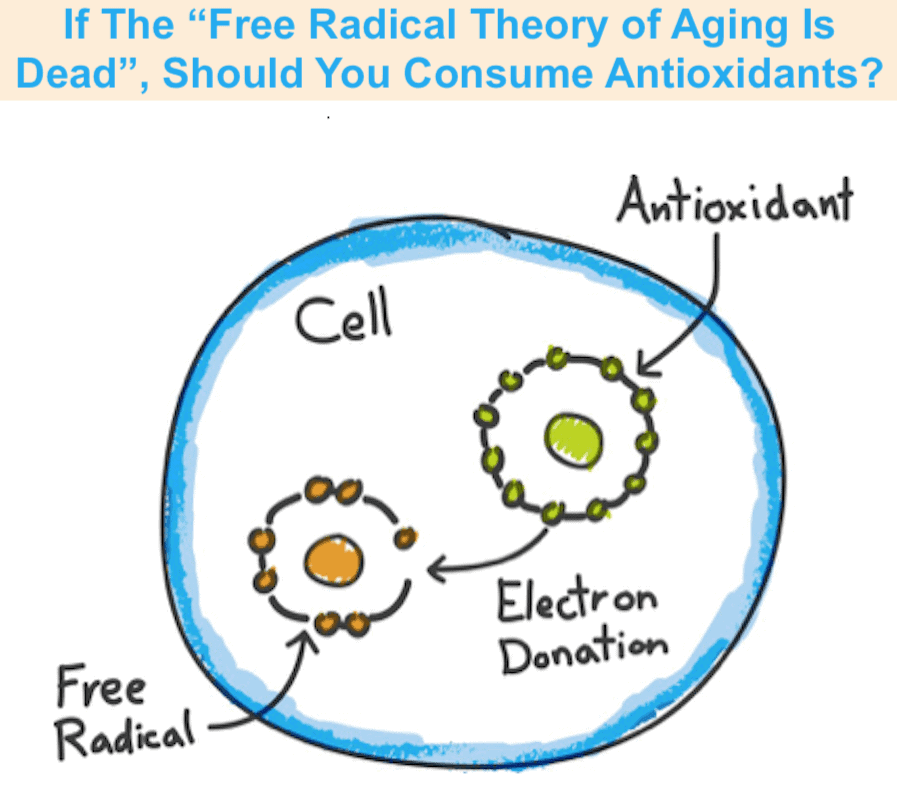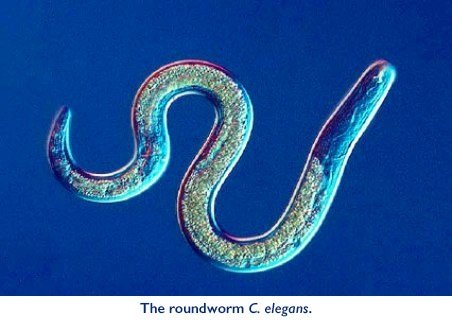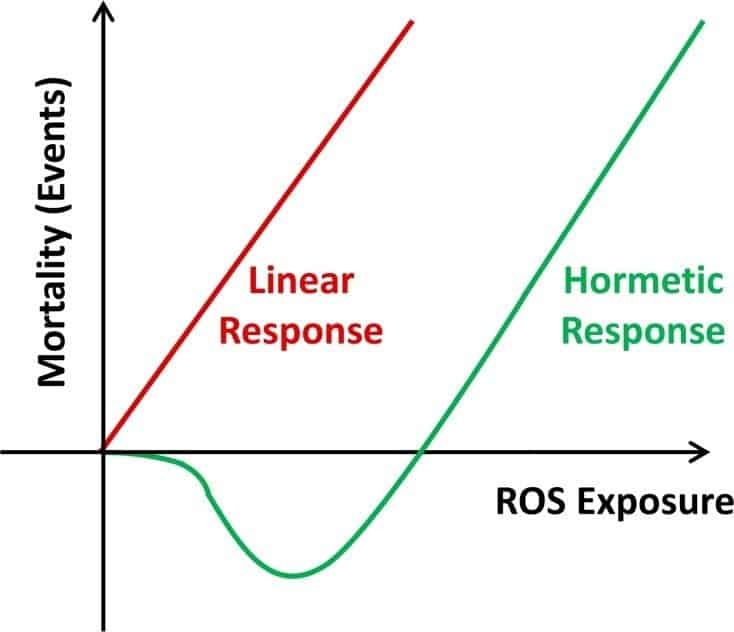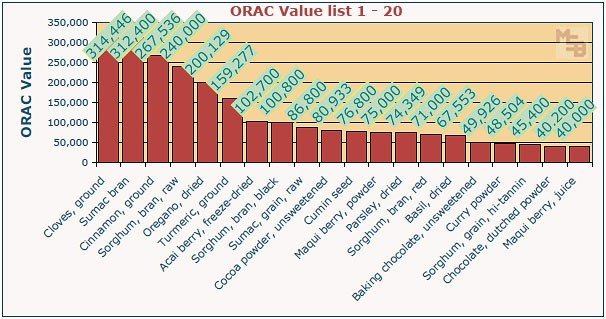If The “Free Radical Theory of Aging Is Dead”, Should You Take Antioxidants?
We now have more than ten years of scientific studies that show that the Free Radical Theory of Aging is dead. Does this mean that you can toss your antioxidant supplements in the trash, and if you do, what does this mean to all those raging free radicals spinning around in your body?
DID A lowly worm upend a bone-deep conviction that free radicals are bad for you, and therefore you need plenty of antioxidant supplements?
The worm did, says the science, and it got a lot of help from twenty-something year-old men — all of whom were studied to determine the extent, if any, that free radicals harm us and thereby support the long-accepted Free Radical Theory of Aging.
Here’s a radical assertion that flies in the face of what we’ve been taught:
The free radicals that our cells produce while making energy are not only not harmful, but can even slow the body’s aging down.
The person who I just quoted is Dr. Michael Ristow, professor of energy metabolism at ETH Zurich, one of the most prestigious universities in the world.
When asked about the Free Radical Theory of Aging, he said, simply:
It’s dead.
Dr. Ristow is not alone in this assertion. Research biologists Drs. Piotrowska and Bartnik put it this way:
“At present, the free radical theory of aging is no longer considered to be true.”
So, what does this suggest you should be doing with all of those antioxidant supplements you’ve been gulping down?
In this article, you’ll discover:
- What you need to know about the free radical theory of aging
- What worms (and young men) tell us about free radicals (ROS) and small stressors (Hormesis)
- What you need to know about antioxidants (and not just those in supplements)
Let’s dig in…
What You Need To Know About The Free Radical Theory of Aging
Simply put, the Free Radical Theory of Aging posits that aging is caused by the accumulation of damage inflicted by free radicals, also called reactive oxygen species (ROS), a mitochondria byproduct.
Increased formation of mitochondrial ROS was postulated to be a major cause of aging in 1956, when Denham Harman introduced his Free Radical Theory of Aging (Harman 1956). According to this concept, increased ROS formation causes an accumulation of damage in the cell, “resulting in age-related impairment of cellular functions and ultimately death of the cell or the corresponding organism, respectively.” (1)
The older we get, the more time ROS has to degrade our various physiological functions, leading to cancer, atherosclerosis, Alzheimer’s disease, Parkinson’s disease and many others, as well as to the overall degradation itself coincident with aging.
Before we go further, a note on Free Radicals (ROS) and Mitochondria will serve us well.
Free Radicals (ROS)
“Free radicals” are, says Live Science, the natural byproducts of chemical processes, such as metabolism. Substances that generate free radicals can be found in the food we eat, the medicines we take, the air we breathe and the water we drink. These substances include fried foods, alcohol, tobacco smoke, pesticides and air pollutants.
Dr. Lauri Wright, a registered dietitian and an assistant professor of nutrition at the University of South Florida, said, “Basically, I think of free radicals as waste products from various chemical reactions in the cell that when built up, harm the cells of the body.” (2)
The conundrum is that free radicals are also essential to life.
Christopher Wanjek, the Bad Medicine columnist for Live Science, wrote in 2006 that the body’s ability to turn air and food into chemical energy depends on a chain reaction of free radicals. Free radicals are also a crucial part of the immune system, floating through the veins and attacking foreign invaders. (2)
As we’ll soon see, this free radical good/bad dichotomy is explained by hormesis, but first, a bit about mitochondria.
Mitochondria
Mitochondria are important cell organelles that are responsible for the conversion of most of the nutritive energy derived from the food/drink we consume, and exert a major role in aging processes, as well the development of age-related diseases. (2)
Elysium Health describes it like this:
Cells are the smallest unit of life. The average human body has trillions of them. In each cell are components called organelles, including familiar names like the mitochondria and the nucleus, which communicate with each other to carry out all of the processes in our body. This communication consists of physical, chemical, and nutritional processes by which cells convert food to energy, light to imagery, and stimulus to sensation.
ROS — The Amount Counts
Let’s return to Dr. Michael Ristow, professor of energy metabolism at ETH Zurich. In an interview with Tegan McCaslin, lead editor of Geroscience, Dr. Ristow makes the following critical point relative to the Free Radical Theory of Aging:
ROS doses work like a vaccination — Unlike the research that supported the Free Radical Theory of Aging, in real life, free radicals typically occur in very low doses in healthy organisms, or humans, where they serve as “signaling molecules” that increase our body’s defense mechanisms against external stressors. As such, it works like a vaccination, whereby repeated low doses of free radicals will increase stress resistance.
So, what Dr. Ristow is saying is that the effect ROS has on us is dose dependent:
- A little bit of ROS makes us stronger (age slowly, more resistant to chronic disease)
- A lot of ROS makes us weaker (age faster, less resistant to chronic disease)
The reason this is so will be revealed next.
What Worms Tell Us About ROS and Hormesis
Let’s continue with Dr. Ristow’s interview.
As evidence for, and to underscore the value of some amount of ROS, Dr. Ristow recounts the results of aging research on wee bitty worms called C elegans, just 1 mm in length.
These worms are very popular subjects for age researchers because they’re easy to genetically manipulate, cheaply reproducible, have very short lifespans (17 days) and 35% of C elegans‘ genes are closely related to human genes. (3, 4)
Around 2006 or 2007, it was demonstrated, says Dr. Ristow, that increasing ROS in these worms would increase their lifespan, a result clearly at odds with the Free Radical Theory of Aging. Subsequently, a number of labs published similar findings, including David Gems in London, Gerald Shadel at Yale, and Siegfried Hekimi in Montreal.
Obviously, these research results have turned the Free Radical Theory of Aging upside down, as it appears that rather than decrease lifespan, ROS may increase it, given certain conditions — like how much of it is happening in your body.
In their study, Mitohormesis: Promoting Health and Lifespan by Increased Levels of Reactive Oxygen Species (ROS), Drs. Michal Ristow and Katrhin Schmeisser (Department of Nutrition, University of Jena) dig deep into proving this assertion:
“While high levels of ROS are generally accepted to cause cellular damage and to promote aging, low levels of these may rather improve systemic defense mechanisms by inducing an adaptive response.”
This “adaptive response” is in the purview of a concept called “hormesis“.
As Dr. Colin Champ writes on his Caveman Doctor blog:
The controversial phenomenon of hormesis was first described in 1888 when a German pharmacologist named Hugo Schulz found that a very small dose of potentially lethal poison caused yeast to grow instead of killing them. Not until the next century, in 1943, was the term hormesis officially used in a scientific document. More recently, the theory of hormesis has been awakened and advanced by Dr. Michael Ristow, whose research suggests that a small amount of insult to our mitochondria, the power houses of our cells, may provide a large benefit to our health. His lab in Germany continues to produce research that has been revealing these benefits.
The following graph and illustration from Ristow and Schmeisser’s study tells the tale.
Low-dose ROS Reduces Mortality
That red line in the above graph shows historically expected mortality response from ROS exposure — the more ROS, the more death. The green line shows what research over the last decade has discovered — that some amount (not too large) of ROS actually reduces mortality, due to hormesis, and adaptive response, which German philosopher, Friedrich Nietzsche unwittingly (in this context) explained:
“That which does not kill us, makes us stronger.“
Ristow and Schmeisser describes what the graph portrays thus:
“While the Free Radical Theory of Aging suggests a linear dose-response relationship between increasing amounts of ROS and oxidative stress on the one hand, and mortality events on the other (red curve), the concept of mitohormesis indicates a non-linear dose-response relationship where low doses of ROS exposure decrease mortality, while higher doses promote mortality.” (5)
Mitohormesis?
The “mito” part refers to mitochondria. The “hormesis” part you already know about. Together, the term “mitohormesis” refers to a cellular adaptive response process that improves systemic defense mechanisms instigated by low levels of ROS. Bottom line:
A bit of ROS makes your mitochondria stronger.
And that assertion is nicely depicted in our next illustration, also from Ristow and Schmeisser’s study.
ROS Can Produce A Vaccination-like Adaptive Response
The above illustration shows how ROS (at dose dependent levels) can produce the same result as a vaccination, which works by introducing a small does of an infectious agent into your body in order to stimulate and adaptive, immune response.
In Ristow and Schmeisser’s language:
“Transiently increased ROS levels cause a vaccination-like adaptive response that promotes endogenous ROS defense capacity. The figure exemplifies the organismal stress response to low-level and/or short-term ROS exposure in comparison to the long-standing vaccination process, where inactive or impaired microbes exert an organismal immune response leading to a long-lasting defense capacity against future infections.” (5)
So, dear reader, given that low dose ROS (free radicals) can make you more resistant to aging, do you really want to expunge them with antioxidant supplementation?
What You Need To Know About Antioxidants
The point I’m about to make is not that we don’t need antioxidants, but that the science on the matter indicates that we don’t need antioxidant vitamin supplements — at least not to the degree we thought.
There are different types of antioxidants and you need to know the difference between them:
- antioxidant supplements
- endogenous antioxidants
- antioxidants in foods
Antioxidant Supplements
Have you heard of the term, “cognitive dissonance”?
Wikipedia tells us that cognitive dissonance “is is the mental discomfort (psychological stress) experienced by a person who simultaneously holds two or more contradictory beliefs, ideas, or values. The occurrence of cognitive dissonance is a consequence of a person performing an action that contradicts personal beliefs, ideals, and values; and also occurs when confronted with new information that contradicts said beliefs, ideals, and values.”
For most of my adult life I took antioxidant supplements. I swore by them. I took them often and liberally, and searched high and low for those with the best ORAC value, something I’ll expand upon momentarily.
Then I started learning more about various studies that indicated there could be a downside to antioxidant supplementation, not because they didn’t work, but because they worked too well. Antioxidants like vitamin C and vitamin E can directly inactivate free radicals, and that’s why they’re widely used as supplements.
The problem is, as you’ve been reading, you don’t want to reduce ROS too much if you want to live a long and strong life given the beneficial hormetic effect of low dose ROS on mitochondria.
I had read WebMD’s review report citing Drs. Goran Bjelakovic and Christian Gluud study, where they said:
Our findings have already changed the way I counsel my patients about antioxidant supplements. According to our findings, beta-carotene, vitamin A, and vitamin E cannot be recommended. I am telling them that they should stop using these supplements. There is no reason to take anything that hasn’t been proven beneficial. And these antioxidant supplements do not seem beneficial at all.
Dr. Michael Ristow, the professor of energy metabolism at ETH Zurich introduced at the outset of this article, joined an exercise physiology group and ran a randomized controlled trial to test the effects of antioxidant supplements on young men:
- The men were in their mid-twenties.
- Half consumed common, widely available antioxidants; half a placebo.
- They exercised under supervision for two and one-half hours everyday.
- After exercise, various biomarkers like insulin sensitivity, and glucose metabolism were measured.
Although the reasons weren’t clear, it’s been known for about 50 years that regular exercise improves glucose metabolism. It’s also well known that exercise produces free radicals, a conundrum because exercise is probably the most healthy intervention a person can do.
This lead the team to this hypothesis:
An increase in free radicals would explain the health-promoting effects of exercise.
They tested this by seeing whether the antioxidant supplementation would kill the effects of exercise in humans, and that’s exactly what happened. Those who got the placebo showed the expected positive effects of exercise on metabolism, and the men who got the antioxidants had almost none such positive effects.
There were many follow-up studies, Dr. Michael Ristow reports: Some of them didn’t see the effect as strikingly, but none of the studies found any positive effects from antioxidants, and many studies did confirm his findings.
Now, before you trash all of your antioxidant vitamin supplements, consider this:
- Water-based antioxidant supplements, like vitamin C are relatively harmless because excessive amounts will be voided via urine.
- Fat-based antioxidants, like vitamin E, vitamin A, beta-carotene can become problematic, given that excessive amounts are stored in body fat, and they’ve been repeatedly shown to increase cancer, to cause cardiac problems like heart attack, and to reduce lifespan, says Dr. Ristow and others who have conducted the studies here referenced.
- Certain high-antioxidant supplements that support your own body’s endogenous production of antioxidants, such as glutathione (essential for our detoxification system) can be useful.
If you still feel that you need to supplement with antioxidant vitamins, select those that have substantial value in other areas, such as curcumin and alpha lipoic acid, among many others.
Read, The Golden Spice
You can also choose vitamin brands that use whole foods in their formulation, an excellent example being the MegaFoods line of vitamin supplements. Their byline, “From Farm to Tablet” is quite accurate.
Finally, you can take a supplement like Elysium Health’s Basis, which contains Nicotinamide adenine dinucleotide, or NAD+, a coenzyme found in all living cells. It plays an essential role in hundreds of metabolic processes in the cell. The play here is to improve your mitochondrial capacity to deal with ROS innately.
Endogenous Antioxidants
Endogenous antioxidants are those produced naturally by the body to help ensure that high levels of ROS is mitigated.
There are many endogenous supplements, such as superoxide dismutase, or catalase, glutathione s-transferase and glutathione peroxidase and they’re very capable at inactivating oxidative stress.
They’re as good at this as antioxidant pills, which begs the question:
Why are antioxidant supplements bad, but endogenous antioxidants good?
The reason:
Antioxidant supplements don’t offer the cascade of increased reactive oxygen species (ROS), which affects not only the antioxidant defense genes, but also cancer prevention genes, maintenance of the stem cell pool and so on, which are all of these depend on ROS signals. (6)
Thus, the response to an endogenous ROS signal is broader than just antioxidant defense, and it affects many pathways. For example, energy deprivation and caloric restriction induce oxidative stress. From an evolutionary perspective, it makes perfect sense to trigger a cascade of many types of genes to be as broadly protected against a harsh environment as possible.
All this gets complicated, but what it comes down to is that our bodies evolved to produce various endogenous antioxidants to deal with ROS, and at the same time deal with other stresses; for instance by activating other defense mechanisms like DNA repair.
The bottom line:
A healthy person’s own endogenous antioxidants are typically sufficient to keep free radicals at a level to where they have a beneficial hormetic effect (like an inoculation).
Antioxidants in foods
As you might have learned once upon a time long ago in school, the antioxidants in fruits and vegetables contribute to why they’re healthy, assuming they’re free of pesticides, have been grown in nutritious soil, and have not been adulterated by industrial processing and pre-cooking.
Interestingly, such foods can contain both direct antioxidants that can react with free radicals, such as vitamin C and E, and indirect antioxidants, which — get this — can actually induce oxidative stress! But before you beat your head against the wall in confusion, the oxidative stress induced by the indirect oxidants in some foods are beneficial.
The foods I’m referring to that contain indirect antioxidants are rich in polyhenols, such as EGCG found in green tea, or the compounds that give vibrant colors to some fruits and vegetables, such as blueberries, blackberries and purple cabbage, among many others.
Such foods are “pro-oxidants” because the cause oxidative stress, and as such, they induce the same antioxidant defense in the body that exercise does. And like exercise, such pro-oxidant foods are very healthy, again, due to the hormetic effect they induce.
So, what you want to do is to eat lots of food high in antioxidants, and let them and your endogenous antioxidants deal with excess ROS.
To do this, let ORAC be your guide.
ORAC is the antonym for “Oxygen Radical Absorbance Capacity” units. It was originally developed by the National Institute on Aging (NIA) at the National Institutes of Health (NIH) to measure the antioxidant content of foods, but is largely co-opted by vitamin supplement companies to indicate the free radical scavenging capability of the antioxidant supplements they make.
Here’s Dr. Josh Axe’s top 10 high antioxidant foods:
- Goji berries: 4,310 ORAC score
- Wild blueberries: 9,621 ORAC score
- Dark chocolate: 20,816 ORAC score
- Pecans: 17,940 ORAC score
- Artichoke (boiled): 9,416 ORAC score
- Elderberries: 14,697 ORAC score
- Kidney beans: 8,606 ORAC score
- Cranberries: 9,090 ORAC score
- Blackberries: 5,905 ORAC score
- Cilantro: 5,141 ORAC score
Here’s a chart of the top 20 ORAC foods:
Your Takeaway
Remember these three things:
- You probably don’t need more antioxidants than those produced you own body (endogenous antioxidants) and those that various fruits and vegetables provide, because they typically can keep ROS (free radicals) below detrimental levels.
- A small amount (low dose) of ROS is actually beneficial due to the principle of hormesis — that which does not kill you makes you stronger.
- If your unhealthy and/or your diet is awful, try supplementing with antioxidant supplements made from foods, such as those made by MegaFoods or enhance mitochondrial function through supplementing with a NAD+ supplement like Basis.
Last Updated on February 7, 2024 by Joe Garma









